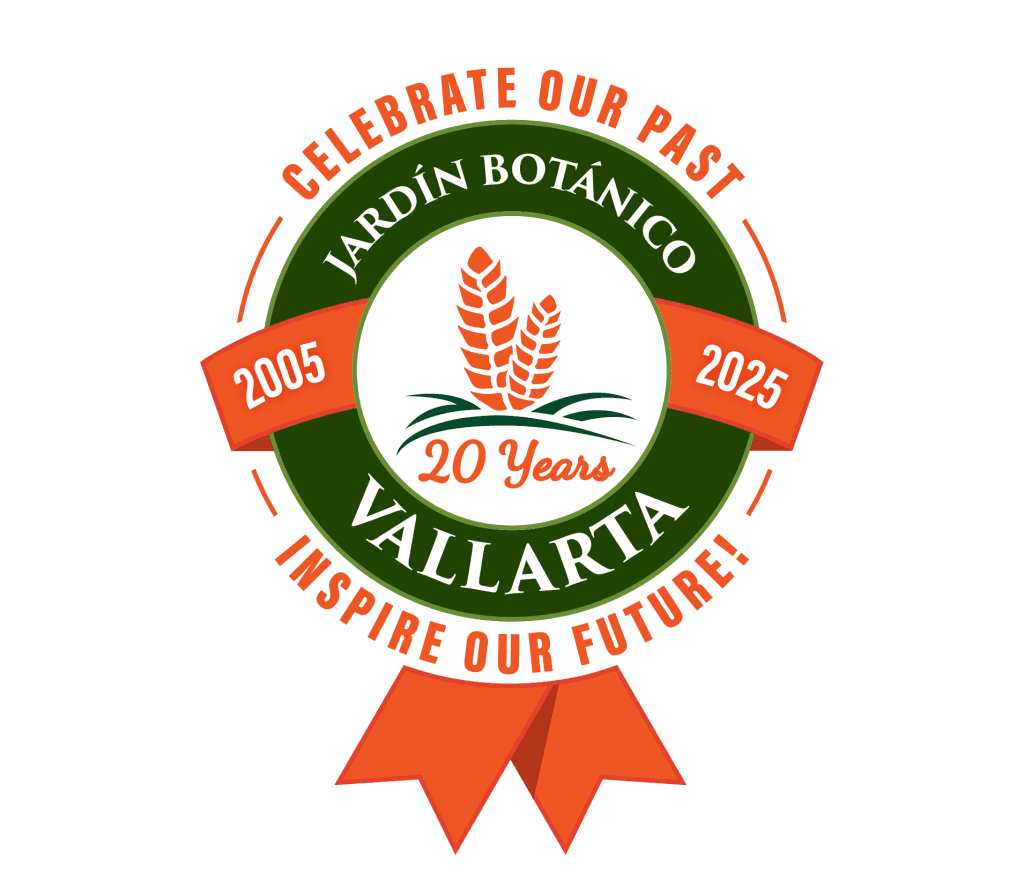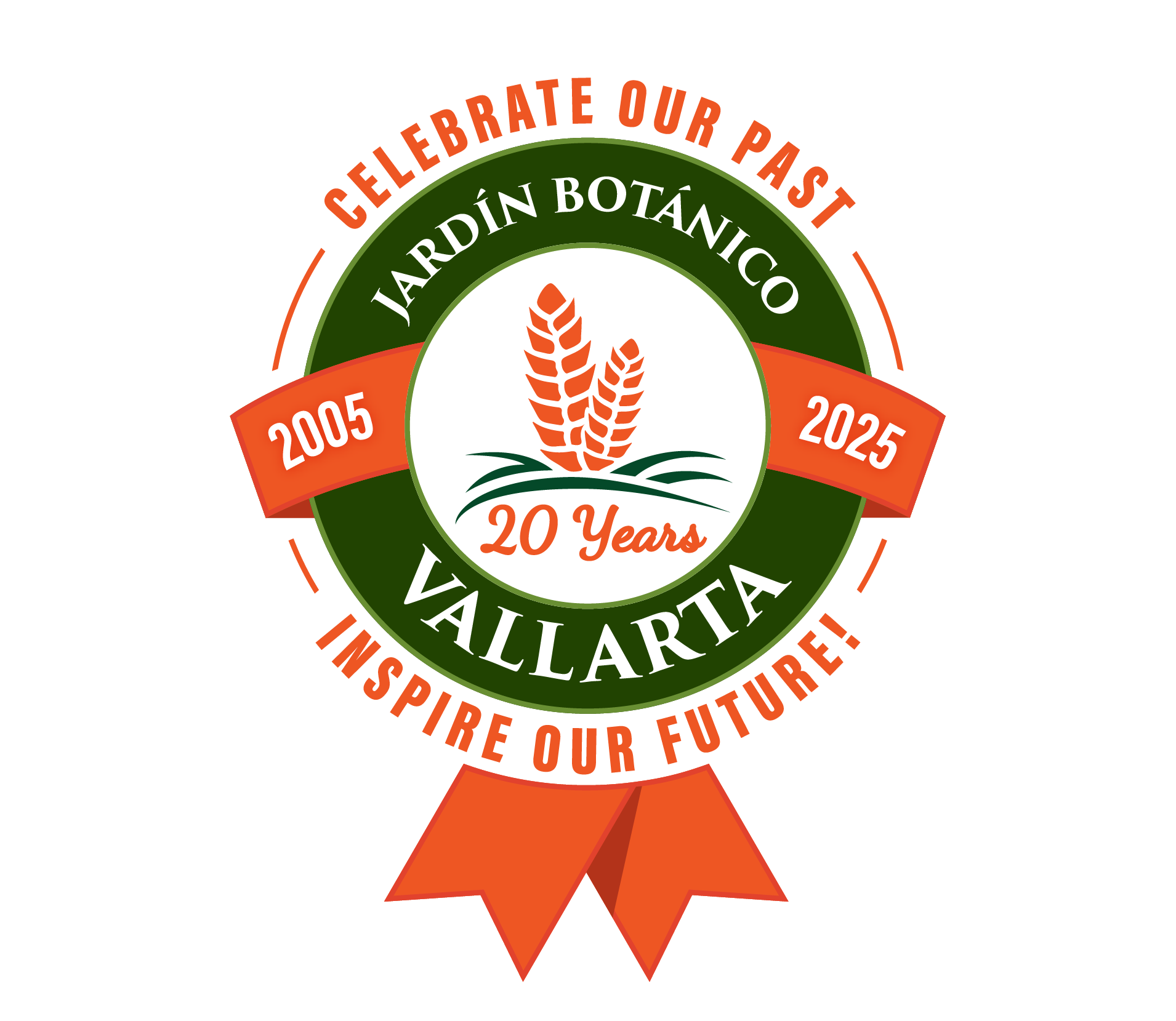Current Conservation Efforts
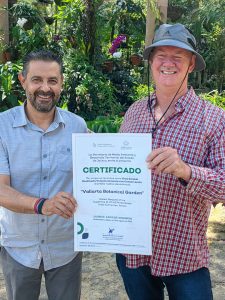
The Vallarta Botanical Garden is in the Chamela-Cabo Corrientes Priority Terrestrial Region (No.63) delimited by the National Commission for the Knowledge and Use of Biodiversity of Mexico (CONABIO). From the beginning, the ecological restoration of the area has been a priority, since previously these lands were used as pastures and agave cultivation fields, however now it is covered with lush vegetation that includes a significant number of native tree species, which are part of the Global Oak and Magnolia Conservation Consortia of the Botanic Gardens Conservation International (BGCI) and the international network of arboretums ArbNet, certified at Level I.
In 2008, the Vallarta Botanical Garden promoted the first inventory of orchids in the Los Horcones River Basin, together with researchers from the University of Guadalajara, in which 50 native species were documented. In 2009, Jesús Reyes, General Director of this Botanical Garden, started an experimental micropropagation laboratory, with the purpose of reproducing native and ornamental species, mainly orchids, for their ex situ conservation in the VBG. In 2018 he renovated the laboratory and acquired specialized equipment for in vitro culture. Currently, 27 species of 15 genera are cultivated, 10 of which are native to Mexico. The experience and constant work have consolidated the VBG as the main organization in the area in the in vitro cultivation of native orchids, which in 2023 won the Leon Levy financing from the Global Botanic Garden Found BGCI with the project “In vitro propagation of four Encyclia species native to western Mexico at the VBG.”

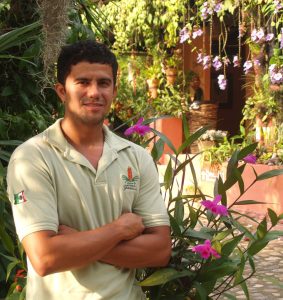
In 2010, the Botanical Garden was registered as a Wildlife Conservation Management Unit with the Ministry of Environment and Natural Resources and in situ conservation efforts have resulted in the acquisition and protection of 120 hectares of forest land, of which 32 of them have been certified as protected natural areas by the Government of the State of Jalisco (Certificate AEDVC-002-2023).
These conservation areas have been organized into sanctuaries dedicated to emblematic fauna, where phototrapping is carried out for their monitoring and protection, such as the “Santuario de los Chonchos” (Penelope purpurascens) with an area of 3 hectares within the perimeter of the Vallarta Botanical Garden and the “Ocelot Sanctuary” (Leopardus pardalis) with an area of 90 hectares on land adjacent to the garden. In addition, it has promoted the protection of the Green Macaw (Ara militaris) through the installation of more than 15 Artificial Nests in conservation areas. This project saw the first macaw born at the VBG fly away in 2019.
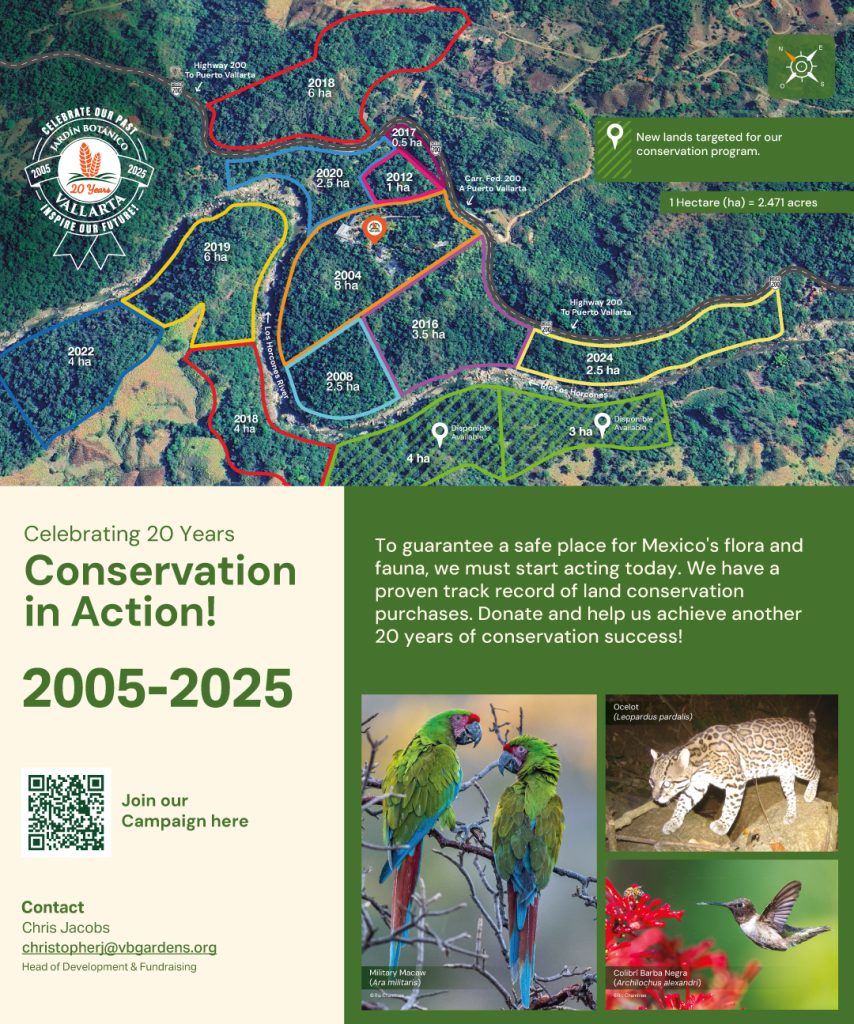

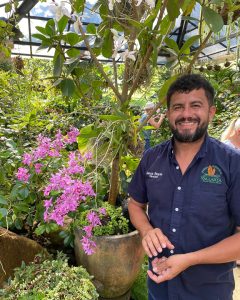
Given the threat of fires, cleaning and prevention campaigns are carried out through signage that prohibits burning, as well as fencing that limits access to protection areas. During 2023, the Vallarta Botanical Garden team faced one of the worst fire seasons and the impact of Hurricane Lidia Category 4. Fortunately, the damage has been repaired, thanks to the support of the membership and the tireless work of our team.
In June 2024 our Director Jesús Reyes was awarded the BGCl Marsh Award for conservation. Receiving this recognition has truly been an honor and motivates us to continue our conservation efforts in western Mexico.
Over the course of 19 years, the Vallarta Botanical Garden has become an important conservation and environmental education center in Western Mexico that currently protects at least 60 species in the risk category by Mexican regulations and the red list of the International Union for Conservation of Nature. You can also be part of these efforts, through volunteering, donations and collaborations in favor of biodiversity. If you want to know more write to: botanica@vbgardens.org.

